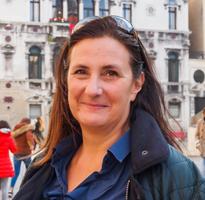Paris has quite rightly acquired the name ‘the city of art’ and it would be a mistake to visit without taking in one of its many iconic galleries and museums - the Louvre, the Musée Rodin or the museum of Picasso to name but a few. Entrance is included for all of these and many more with Kirker’s 48 hour museum pass which gives complimentary access to over 60 museums, monuments and galleries. It is a great asset and not only saves you from buying a ticket but enables you to skip the queues t some of the busier galleries.
Having not visited Paris for a few years I was pleasantly surprised by the Musée D’Orsay - originally a train station designed by Victor Laloux in 1900, it now houses some of the most iconic pieces of art, strongly focussing on the Realism and Impressionism of the late 19th and early 20th century. An abundance of Courbet, Manet, Degas, Van Gogh and Monet paintings adorn its walls, capturing a pivotal moment in Parisian history in the period after the 1850s when the city itself was undergoing rapid modernisation. Walking through the gallery space, you see the painting style change, inspired by a variety of factors including anti-establishment sentiments, foreign influences and the increasing desire to move away from academic subject matter and paint modern life. Personal favourites of mine include Manet’s ‘Le Dejeuner sur L’herbe’ and Degas’ various studies of ballet dancers.
Along with the many galleries Paris has to offer, the museum pass also gives entry into the Chateau de Versailles located some 20km southwest of Paris. Originally built as hunting lodge in the 17th century, the building has been expanded over time, until it arrived at the vast Palace you see today, decorated in the ornate Rococo style. There is nothing quite like walking down the famous Hall of Mirrors, a central gallery in the palace, with seventeen mirror-clad arches overlooking the extensive gardens - which are truly spectacular all year round.
Staff Review
Paris - The City of Art
France
18 Nov 2016

Speak to an expert - 020 7593 2288
Our expert reservations team regularly travel to a wide range of destinations to explore new cities, visit hotels and to research museums, galleries and restaurants so that we can offer the most up-to-date advice and recommendations.
Newsletter
Join our mailing list to receive the latest updates and travel inspiration.


























